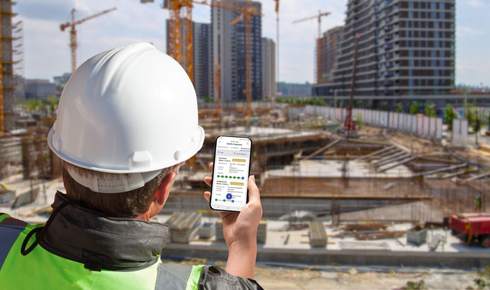If you’ve ever been involved in a construction project — whether it’s a small office remodel or a massive multi-floor commercial complex — you know the drill. Plans change, timelines slip, budgets stretch, and communication often feels like a never-ending game of broken telephone. It’s a tough industry, one where precision and timing matter almost as much as the steel and concrete itself. And yet, despite the high stakes, a surprising number of firms still manage projects using outdated spreadsheets, sticky notes, and a whole lot of crossed fingers.
But that’s shifting. Slowly, but noticeably, technology is reshaping the way builders, contractors, and engineers handle projects. The rise of specialized tools — software built specifically for construction management — is helping leaders get a grip on their work like never before.
Why the Industry Can’t Ignore Digital Tools
Construction is not like running a digital marketing campaign where mistakes can be tweaked on the fly. Here, errors cost millions. A single missed change order or communication breakdown can derail weeks of progress. And with projects growing more complex — involving multiple subcontractors, hundreds of suppliers, and an ever-shifting landscape of regulations — relying on “old school” methods isn’t just inconvenient, it’s risky.
This is where dedicated systems come into play. A good tool doesn’t just organize tasks; it creates a central hub where everyone can see the same data, make informed decisions, and reduce guesswork. And when you layer in client-facing features, such as CRM integration, you bridge the gap between technical work and relationship management. That’s the sweet spot modern firms are chasing.
One standout solution is construction project management software with CRM, which gives contractors a dual advantage: managing the nuts and bolts of project workflows while also nurturing client communication. Instead of juggling one tool for building schedules and another for client updates, teams can finally bring it all under one roof.
The Evolution of Construction Tech
Not too long ago, “innovation” in this space meant moving from paper blueprints to PDFs. That was progress, sure, but far from transformative. Now, we’re talking about real-time dashboards, AI-assisted scheduling, predictive analytics, and even tools that integrate drone surveys. The evolution feels a bit like watching an old flip phone turn into a smartphone.
And just like in other industries, adoption follows results. Firms that switched early noticed fewer delays, more accurate cost tracking, and less friction between teams. Others saw happier clients because expectations were clearer and communication was smoother. Slowly but surely, even the most traditional builders are realizing that digital tools aren’t a luxury anymore — they’re survival.
Commercial Projects and Smarter Systems
Commercial construction, in particular, sits in a league of its own. These projects are larger, timelines are tighter, and accountability sits heavy on every manager’s shoulders. Imagine overseeing a hospital build, where delays don’t just frustrate stakeholders but could affect community health services. The pressure is immense.
That’s why platforms like SmartPM for commercial construction are catching so much attention. Designed with scale in mind, they bring together scheduling, risk assessment, and performance tracking in ways that traditional spreadsheets could never handle. The idea isn’t just about “keeping things organized.” It’s about anticipating problems before they explode, measuring productivity in real time, and proving value to clients who expect transparency at every stage.
For commercial firms that often live or die on reputation, that kind of edge is game-changing.
The Overlooked World of MEP
Talk to anyone in the construction business and they’ll tell you: mechanical, electrical, and plumbing (MEP) systems are the backbone of any project. They’re also some of the trickiest parts to coordinate. MEP involves specialized contractors, strict safety codes, and technical designs that don’t always fit neatly into architectural drawings. One misplaced conduit or miscalculated duct size can force expensive rework.
That’s why having construction project management software for MEP is more than just handy — it’s essential. These tools help keep track of revisions, coordinate cross-disciplinary teams, and make sure all those technical details don’t slip through the cracks. When MEP goes smoothly, the rest of the project usually follows. When it doesn’t, chaos tends to ripple across the entire build.
More Than Just Efficiency: Building Trust
One of the underrated perks of adopting these systems is how they affect relationships. Construction has always been as much about trust as it is about bricks and beams. Clients hand over enormous budgets and expect flawless execution, while subcontractors want clear direction and fair pay. Miscommunication erodes that trust quickly.
When you use digital tools, transparency becomes part of the workflow. Clients can log in and see progress without waiting for weekly updates. Subcontractors get clear, documented tasks without guesswork. Managers can show exactly where the budget stands and why certain decisions were made. It’s not just about “working faster.” It’s about building stronger, more reliable partnerships.
The Human Side of Construction Tech
Here’s the thing though — no software, no matter how powerful, replaces people. At its core, construction is still about boots on the ground, skilled hands, and sharp minds making hundreds of micro-decisions every day. What technology does is lighten the load. It frees managers from endless paperwork, reduces the chance of human error, and gives teams more space to focus on the actual craft of building.
Of course, adoption isn’t always smooth. Some workers resist change. Others feel overwhelmed by “yet another system.” The trick for companies is to roll out tools with patience, provide real training, and choose platforms that feel intuitive rather than overcomplicated. The best software is the kind that quietly supports people without making them feel like they’re working for the software instead of the other way around.
Looking Ahead: The Future of Construction Management
If the past decade has taught us anything, it’s that construction tech will only get more advanced. We’re already seeing AI that predicts project risks before they happen, VR walkthroughs that let clients “experience” a building before it’s built, and integrations that pull together accounting, compliance, and on-site safety into a single view.
Will every company adopt these innovations right away? Probably not. The industry is cautious by nature, and for good reason. But as margins tighten and competition grows, those who resist change risk falling behind. At some point, using modern software won’t be a differentiator. It’ll be the bare minimum.
Closing Thoughts
Construction has always been a balancing act — budgets, timelines, safety, quality, client satisfaction. No single tool can make all of those challenges disappear, but the right digital system can make them a whole lot more manageable.
For small firms, it might mean fewer sleepless nights worrying about missed deadlines. For large commercial players, it might mean keeping stakeholders happy and avoiding multi-million-dollar overruns. And for the industry as a whole, it signals a long-overdue shift from “good enough” to genuinely smart, data-driven project delivery.
At the end of the day, whether you’re an architect, a subcontractor, or a project manager buried under Gantt charts, one truth remains: construction is complex, but it doesn’t have to be chaotic. With the right tech, building the future becomes just a little bit smoother.



